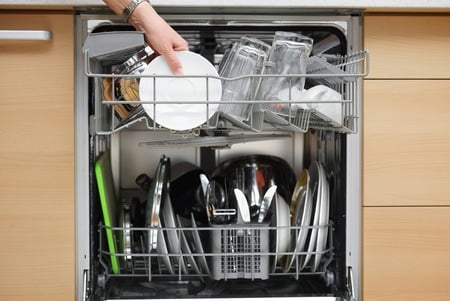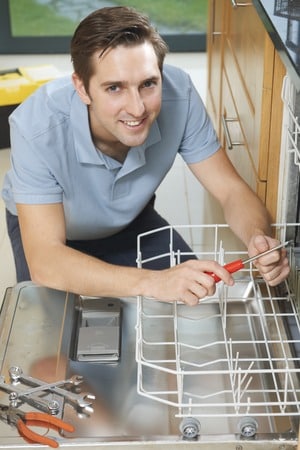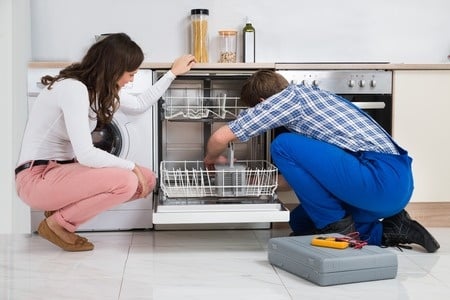
Follow these steps when your dishwasher is not cleaning top rack:
Step 1 – Scrape The Leftover Food From The Dishes
Step 2 – Don’t Obstruct The Dishwasher Upper Spray Arm Of The Appliance
Step 3 – Use Hot Water To Clean The Dishes
Step 4 – If Water Connection Is Through Sink, Run The Water A Few Minutes
Step 5 – Check The Unclean Vessels
Step 6 – Use A Rinse Aid To Improve The Cleanliness Of The Dishes
Step 7 – Inspect The Condition Of Wash Arm To Check For Signs Of Damage
Step 8 – Listen To Sound Of Water Splashing Against The Door
- It is in your interest to scrape the leftover food from the dishes before you load them into the household appliance. You don’t have to rinse the dishes because the detergent you use will do this job. Usually, the detergents in your dishwasher have high phosphate content and they clean better.
- When you load the dishes, make sure the dishes don’t obstruct the wash arm of the appliance. Put the bowls first on the top rack and the plates on the bottom rack. Tableware must be put in the appropriate compartment. Keeping the dishes in specific racks is especially important if you don’t have a second wash arm to clean the dishes kept in the top rack.
- For best results, you must use hot water to clean the dishes. This is important for removal of dried-on food and for the detergents to work effectively. So, if you don’t have kids in your house, you should set the temperature of the water heater higher. Most modern dishwashers come with a heater that can further increase the temperature inside the residential appliance to 150F.
- If the water connection to the machine is through the sink, you must run the water for a few minutes to purge out cold water from the pipes. Removing cold water from the pipes is important because most machines don’t heat the water that enters the machine until the second cycle starts. If you don’t remove the cold water, it will render the cleaning action of the machine ineffective.
- Dishwasher users who have hard water issues in their home are more likely to face the problem of unclean vessels because hard water can affect the cleaning ability of detergents. To deal with this problem, you must fill both the detergent cups. Alternatively, you could use a detergent that comes with water softener.
- You should use a rinse aid to improve the cleanliness of the dishes and to prevent spots on them. It is also recommended that you use powder detergent instead of gel detergent. Powder-based detergents are more effective in hard water and don’t leave any spots. You must also check the expiry date of the detergents as they lose their effectiveness over time.
- When using the machine, make sure to inspect the condition of wash arm to check for signs of damage. Also, if you notice debris on the wash arm, remove it immediately.
- During the wash cycle, listen to sound of water splashing against the door. If this sound is weaker than normal, it indicates that valve is not allowing enough water to enter the machine.


